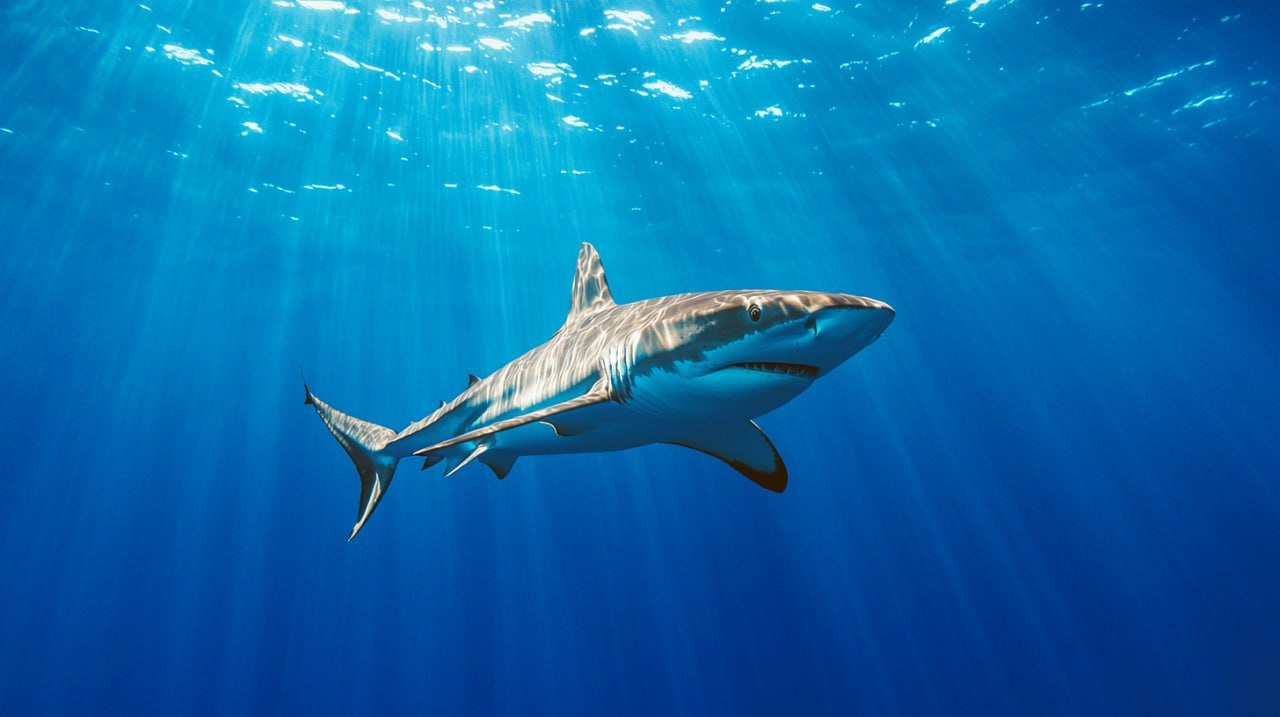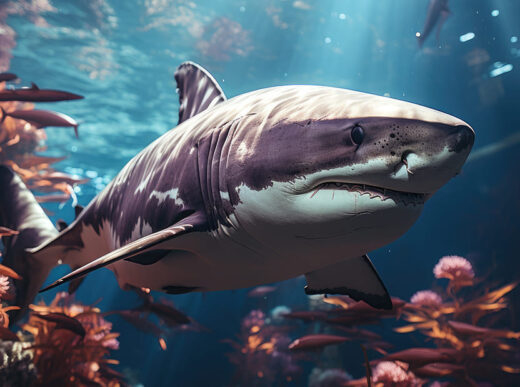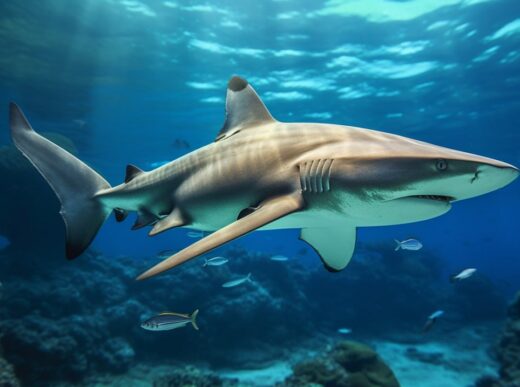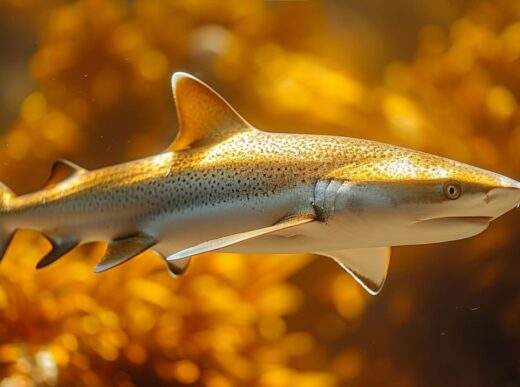Let’s embark on an exciting journey into the deep blue sea as we uncover the mysteries of the oceanic whitetip shark! Known as the most fearsome predator in the world’s oceans, these incredible creatures have a lot more to them than meets the eye. Get ready for an adventure as we explore 20 fun and fascinating facts about the oceanic whitetip shark!
20 Amazing Facts About Oceanic Whitetip Sharks
Dive into the world of oceanic whitetip sharks with these fascinating facts!
Characteristics
1. Alright, let’s clear up the name from the get-go. The oceanic whitetip shark, also known as the long-armed shark, is the lone member of the grey shark genus. In English, this fascinating creature goes by various names like Brown Milbert’s sand bar shark, brown shark, shipwreck shark, nigano shark, oceanic white-tipped whaler, and whitetip shark. Quite a mouthful, huh?
2. Now, the scientists have given it the official title – Carcharhinus longimanus. A bit of a mouthful, right? It’s supposed to mean «Grey shark with long arms,» even though we all know sharks don’t have arms. Oops!
3. What makes this shark stand out? It’s got these crazy long fins on the sides – think of them as wings in the water. With those fins, mistaking the oceanic whitetip for another shark? Almost impossible.
4. Picture this: a bronze shark with a touch of brown or greyish tint. Yep, that’s the oceanic whitetip! Classic shark shape, streamlined and spindle-like.
5. Brace yourself – these sharks can stretch up to a whopping 4 meters! But fear not, you’ll often find them in a more modest size, hanging out at 1.5 to 2.5 meters.
6. Now, here’s the kicker – despite their length, they’re not heavyweights. We’re talking 30 to 60 kilograms here. And guess what? Females usually outsize the males. Girl power!
Habitats
7. Now, here’s a shark that loves soaking up the heat – the oceanic whitetip! These sharks are like beach enthusiasts, steering clear of cold high-latitude waters. But catch them in the low latitudes, and they’re partying in all oceans.
8. Pinning down the oceanic whitetip’s favorite ocean spot? Tricky business. They’re a bit of a mystery. What we do know is the further you venture from the coast, the more likely you are to bump into these long-finned pals. It’s like they’ve got a secret ocean club out there!
Lifestyle
9. Picture this: the oceanic whitetip shark, a true surface dweller! Not one to cozy up to shores, but also not doing deep-sea dives. Their sweet spot? Hangin’ out up to 150 meters below the surface.
10. Meet the globetrotter of the ocean! The oceanic whitetip, a successful and slightly risky predator, embarks on epic journeys in the quest for the perfect snack. Legend has it; they used to be the sea’s designated ship escorts, earning them the nickname «sea dogs.»
Eating Habits
11. Time to talk about dinner plans! Oceanic whitetip sharks have a refined taste for fish and mammal leftovers. How do they decide? With an impeccable sense of smell and some camouflage tricks.
12. Hold onto your hats! These sharks play it smart, poking their noses out for a whiff of the ocean’s aroma. Why? Those white-tipped fins create a sneaky illusion, fooling tuna and marlin into thinking it’s dinner time for a swarm of little fish. Crafty, right?
Intelligence and Social Behavior
13. Picture this: a lone oceanic whitetip shark prowling the seas for its next meal. But, when the buffet is plentiful, these sharks are party animals! Brace yourself for a feeding frenzy – they go all-in, taking a chomp at anything that moves, even their own buddies. It’s a shark-eat-shark world out there!
Reproduction
14. Guess what? The oceanic whitetip shark is a bit old-fashioned – it’s into egg-living. Yep, its little ones hatch from eggs and kick it inside mom’s womb for a while. Only when they hit the 60-centimetre mark do they make their grand entrance into the big blue world.
15. Now, about family planning: this shark isn’t exactly a baby-making machine. In a single litter, there can be up to 15 newborns, and the pregnancy is a year-long affair. Parenthood, oceanic whitetip style!
Population
16. Now, let’s talk numbers. The oceanic whitetip shark has quite the bustling population – it’s one of the most common sharks out there. While we can’t precisely count every fin in the sea, fishermen do haul in hundreds of tonnes of these sharks each year. They’re like the bustling metropolis of the ocean!
Danger To Humans
17. Alright, buckle up! Here’s the chilling scoop: many scientists tag the oceanic whitetip shark as one of the most dangerous and fearless sharks out there. It doesn’t shy away from humans, and the sharp teeth of the longfin shark have unfortunately ended the journeys of shipwreck victims.
18. Now, don’t let your imagination run wild! The good news is that the chances of encountering this shark near the shores are pretty slim. Oceanic whitetip sharks aren’t regulars at the beach, and attacks are quite rare. So, rest easy!
Are There Any Aquariums with Oceanic Whitetip Shark?
19. Now, for all the shark enthusiasts out there, here’s the scoop: due to their widespread presence, you can spot oceanic whitetip sharks in various locations, but usually at a safe distance from the shore. The best vantage points are from ships or boats, providing you with an awe-inspiring view.
20. Hey, shark lovers, here’s a tidbit: oceanic whitetip sharks aren’t exactly cut out for captivity, so you won’t find them in many oceanariums. Even if they do end up in one, their stay is rather short-lived. Typically, these sharks clock in around a year in aquariums, although there have been instances of them holding on for three years.
Here are a few aquariums that may have featured Oceanic Whitetip sharks:
- Dubai Aquarium & Underwater Zoo (UAE):
- Location: Dubai, United Arab Emirates.
- Website: Dubai Aquarium & Underwater Zoo
- Oceanogràfic València (Spain):
- Location: Valencia, Spain.
- Website: Oceanogràfic València
- Monterey Bay Aquarium (USA):
- Location: Monterey, California, USA.
- Website: Monterey Bay Aquarium
Always check the specific aquarium’s website or contact them directly for the most up-to-date information on their exhibits, as displays may change over time. If oceanic whitetip sharks are featured, they are likely to be part of exhibits that replicate open ocean environments. Keep in mind that housing pelagic sharks can be challenging due to their natural behaviors and habitat preferences.




